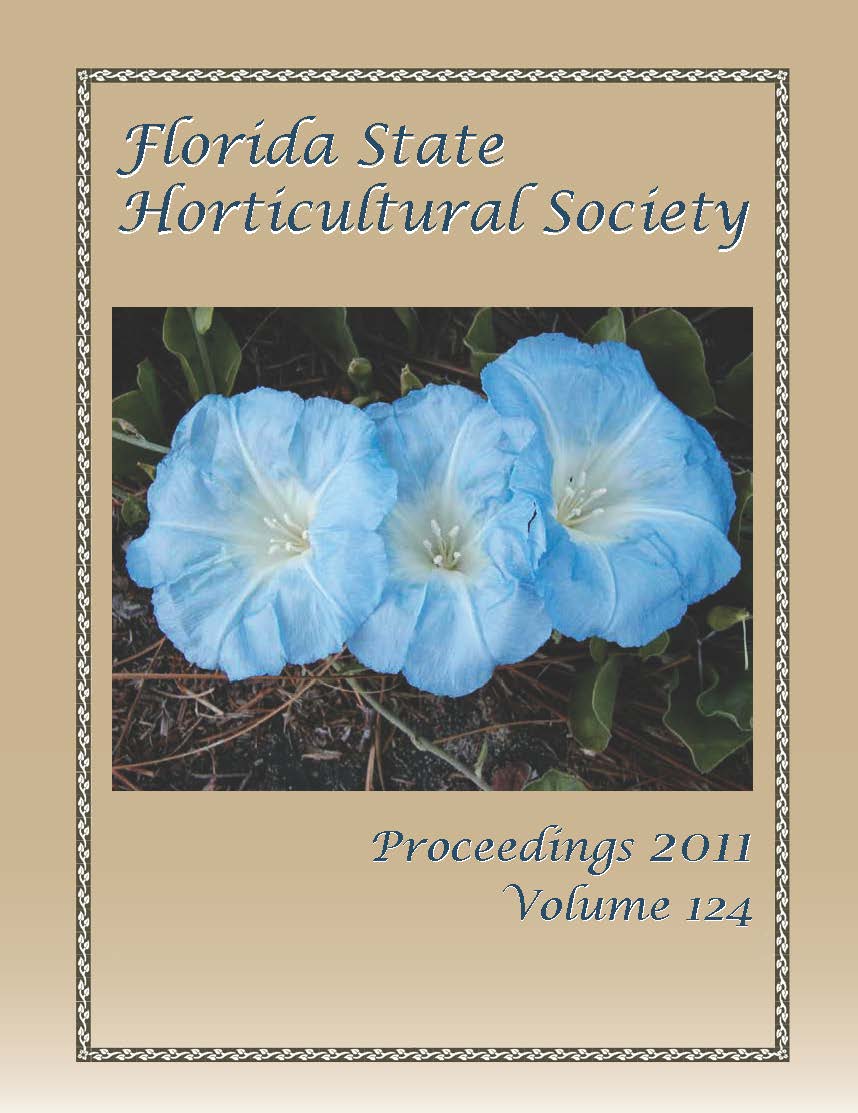Published 2011-12-01
Keywords
- Citrus reticulata,
- citrus breeding,
- cluster analysis,
- mandarin hybrids,
- tangerine juice
- sensory,
- flavor ...More
Abstract
The University of Florida and USDA/ARS have active citrus scion breeding programs. Hybrids that pass many selection steps and approach release are evaluated for horticultural traits and postharvest characteristics. Seven advanced selections and three commercial cultivars were harvested multiple times from research sites in Lake Alfred and Leesburg, FL. A panel of 10 members was trained to evaluate citrus fruit and reached an agreement for 10 descriptors of fresh tangerines. Fruit were washed, sanitized, peeled, and halved longitudinally so that one-half of each fruit was evaluated by the taste panel, and the other half was analyzed for quality parameters (total soluble solids and titratable acidity). Segments of each half fruit were then separated, cut in half, and placed in a fruit bowl to assure that each panelist would evaluate a sample composed of multiple fruits. Half segments (about 10) were served in 4-oz plastic cups, together with reference standards for sensory evaluation. In general, panelists could perceive increased ripeness as distinct from increased sweetness, and decreased sourness paralleled with decreased bitterness. For most selections, juiciness decreased with maturity, except for ‘Murcott’ and its low seed mutant. There were no specific trends for tangerine, fruit and floral flavors due to harvest maturity; however, sulfury and pumpkin/spicy flavors increased with maturity for some selections, and may be an indicator for over-ripe fruit. ‘Temple’ remained stable over harvest times, with more orange than tangerine flavor.

